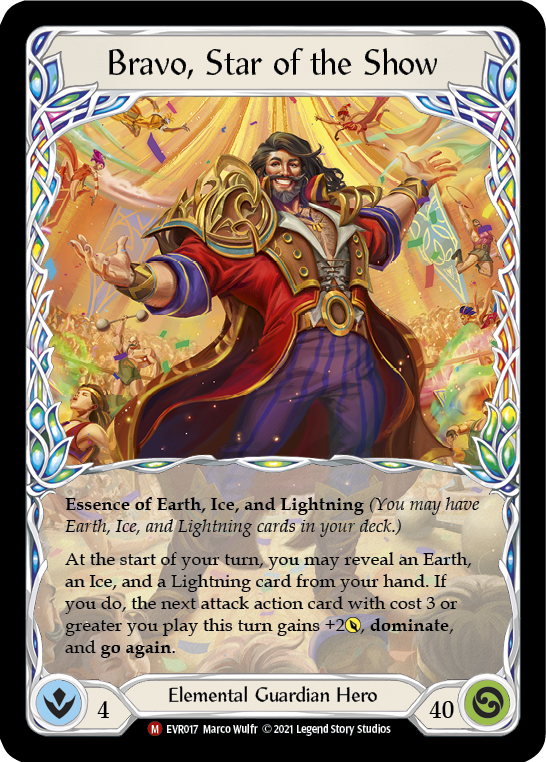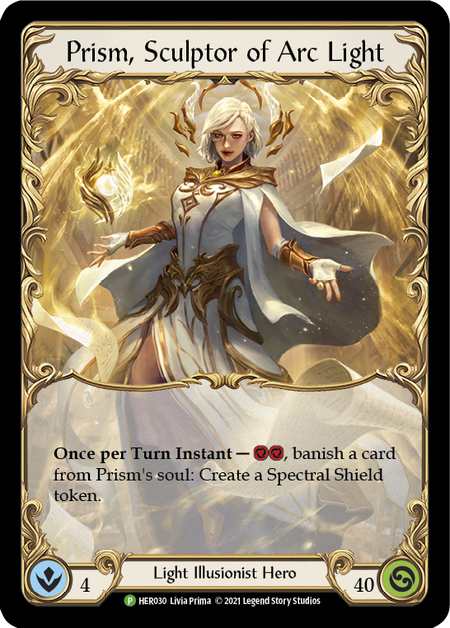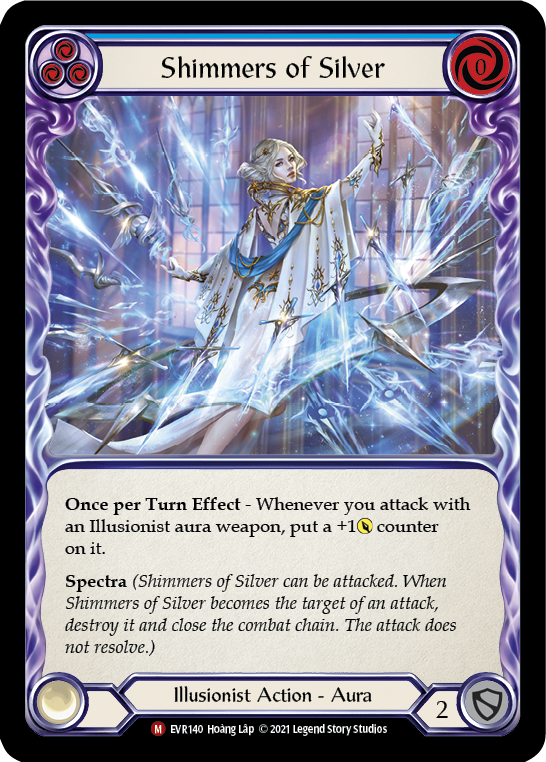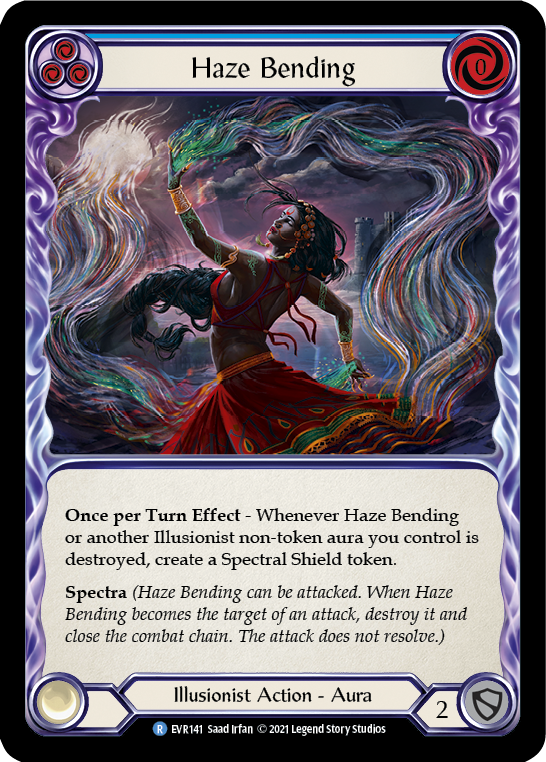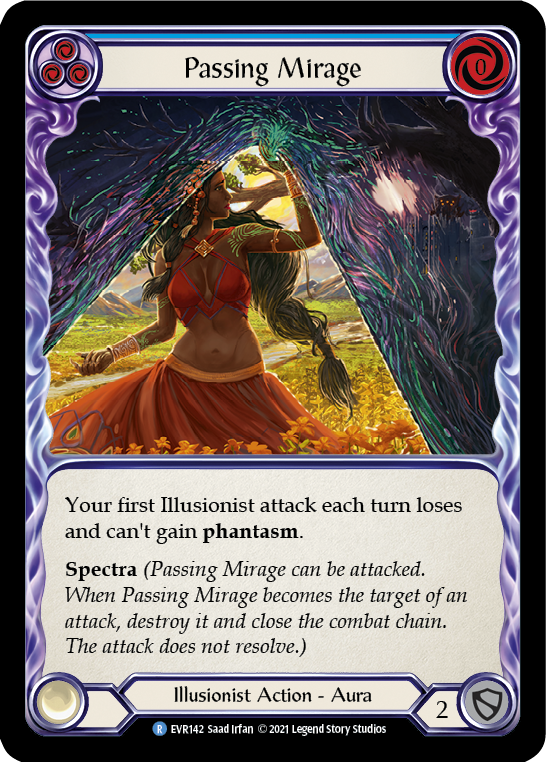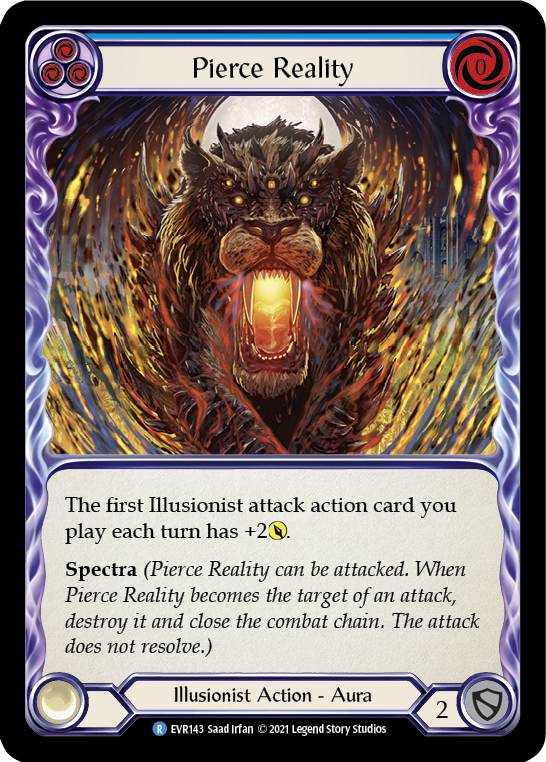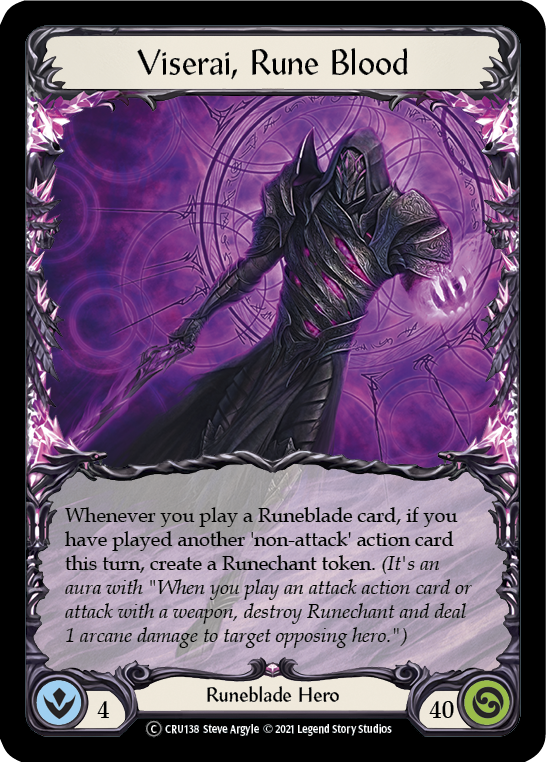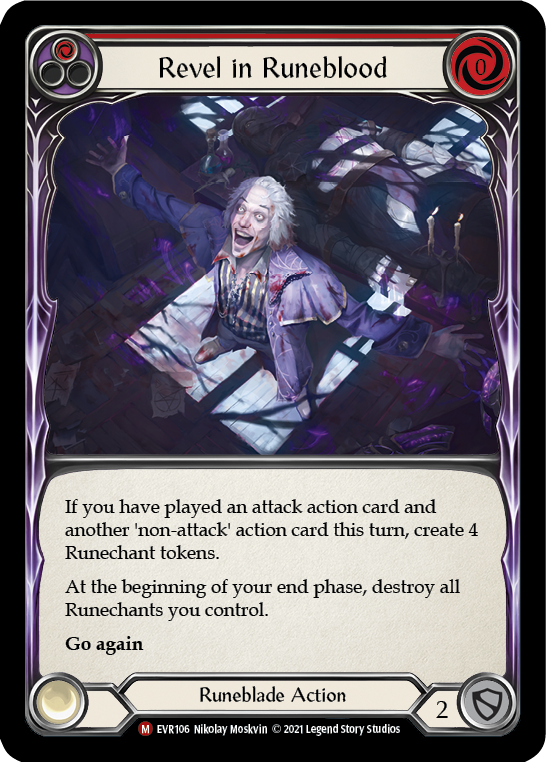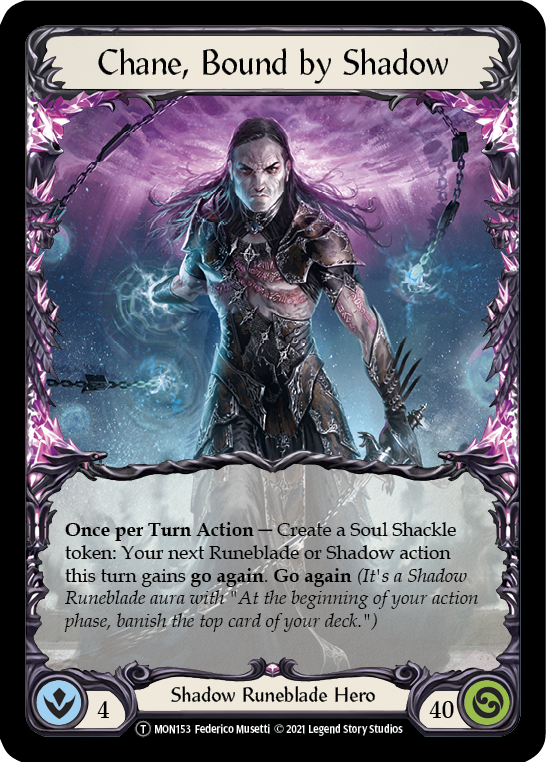It’s been quite a month for Classic Constructed Flesh and Blood. The arrival of Everfest has completely reshaped the format more than anyone could have anticipated. My last month has been spent deciphering the impact of the set’s most powerful cards and I’m only just now slowing down on that process. Unsurprisingly, in the past month since Everfest, many decks rose, and many decks fell out of favor. Some were older heroes championed by the most devoted players of our community that have been supplanted by something new and more powerful. It’s no big secret that the big three decks of the format are Bravo, Star of the Show, Viserai and Prism with Chane also making guest appearances. Some people have even gone so far to dub it “the triangle of death.” If you want to be successful at the Calling Indianapolis, knowing these decks inside and out is a must!
It was only very recently where everyone questioned just how powerful the new hero would be. Roughly a month after writing the introductory article to the deck and the answer is very clear: Bravo, Star of the Show is the super star of the format. While the core concept of the deck remains consistent – revealing three elements and hitting your opponent in the face for a bunch of damage – the actual 80-card builds have evolved quite a bit since the early iterations.
Hero / Weapon / Equipment
1 x Arcane Lantern
1 x Crater Fist
1 x Crown of Seeds
1 x Fyendal's Spring Tunic
1 x Heart of Ice
1 x Mage Master Boots
1 x Nullrune Boots
1 x Rampart of the Ram's Head
1 x Shock Charmers
1 x Stalagmite, Bastion of Isenloft
1 x Winter's Wail
Pitch 1
3 x Autumn's Touch (1)
3 x Break Ground (1)
3 x Crippling Crush (1)
1 x Entangle (1)
3 x Lightning Surge (1)
3 x Oaken Old (1)
1 x Pulse of Volthaven (1)
2 x Pulverize (1)
2 x Pummel (1)
2 x Sink Below (1)
3 x Spinal Crush (1)
3 x Turn Timber (1)
Pitch 2
3 x Autumn's Touch (2)
1 x Break Ground (2)
1 x Pulse of Candlehold (2)
1 x Remembrance (2)
1 x Tome of Fyendal (2)
Pitch 3
3 x Autumn's Touch (3)
3 x Awakening Bellow (3)
3 x Blink (3)
3 x Blizzard (3)
1 x Break Ground (3)
3 x Channel Lake Frigid (3)
3 x Heaven's Claws (3)
3 x Icy Encounter (3)
1 x Lightning Surge (3)
1 x Pulse of Isenloft (3)
3 x Shock Striker (3)
3 x Winter's Bite (3)
3 x Winter's Grasp (3)
At this point, there are many different iterations of the powerful hero with some players opting for the full six defense reacts in Turn Timber and Staunch Response while others shave on the reaction spells to play a more aggressive version of the deck leaning on the powerful combination of three Awakening and three Pulverize. In fact, Magic the Gathering super star Grzegorz ‘Urlich’ Kowalski just took down his ProQuest with the latter combination.
At the other end of the spectrum, you have New Zealand guardian aficionado Cayle McCreath touting a more controlling version of the deck which he used to take down multiple ProQuests in arguably one of the most skill dense populations in the world, a feat that not even #1 ranked player Matt Rogers can claim!
Hero / Weapon / Equipment 1 x Crater Fist 1 x Crown of Seeds 1 x Fyendal's Spring Tunic 1 x Ironhide Legs 1 x Nullrune Boots 1 x Rampart of the Ram's Head 1 x Winter's Wail Pitch 1 3 x Autumn's Touch (1) 3 x Crippling Crush (1) 3 x Fate Foreseen (1) 3 x Oaken Old (1) 1 x Pulse of Volthaven (1) 3 x Pulverize (1) 3 x Sink Below (1) 3 x Spinal Crush (1) 3 x Staunch Response (1) Pitch 2 3 x Art of War (2) 3 x Autumn's Touch (2) 1 x Pulse of Candlehold (2) Pitch 3 3 x Autumn's Touch (3) 2 x Awakening Bellow (3) 3 x Blink (3) 3 x Blizzard (3) 3 x Channel Lake Frigid (3) 3 x Disable (3) 2 x Exposed to the Elements (3) 3 x Flash (3) 3 x Glacial Footsteps (3) 3 x Heaven's Claws (3) 3 x Icy Encounter (3) 1 x Pulse of Isenloft (3) 3 x Tear Asunder (3) 3 x Thunder Quake (3) 3 x Winter's Grasp (3)
Instead of the more linear aggressive plan that Starvo players have been opting for, Cayle preaches patience, utilizing up to nine defense reactions with the goal of surviving the first cycle through of the decks and then turning the corner with his much more powerful Guardian blues compared to the mediocre elementals his mirror match opponents would have in the same scenario. Moving past the mirror, the deck also affords a wide array of options fully utilizing Starvo’s vast tool box giving options not usually available to Guardian players in traditionally bad matchups such as Dash or Prism.
So which version is best and will give you the greatest chance of success? Unfortunately, this author doesn’t know either. With so many versions currently available, each with their own success and strongly opinionated pilots, my suggestion would be to play whichever version you are most comfortable with. There is a significant edge in being comfortable with the ins and outs of your 80 cards that a slightly “better build” in a vacuum could afford.
Prism has had quite a turbulent season. Early on in the spoilers, she was on my short list for best Hero heading into the metagame with a ton of new tools added to her arsenal. However, testing early unrefined builds with no concrete direction or game plan shook my faith in the deck and I quickly wrote her off. And I was wrong to do so. Since that time period, her faithful pilots have continued to tune and iterate Prism into the lean, mean, Guardian killing machine she is today. Just check out Matthew Light’s ProQuest winning list below!
Hero / Weapon / Equipment 1 x Arcanite Skullcap 1 x Crown of Reflection 1 x Fyendal's Spring Tunic 1 x Ironhide Gauntlet 1 x Luminaris 1 x Nullrune Gloves 1 x Phantasmal Footsteps Pitch 1 3 x Miraging Metamorph (1) 2 x Prismatic Shield (1) 3 x Sink Below (1) 2 x Unmovable (1) 3 x Wartune Herald (1) Pitch 2 3 x Arc Light Sentinel (2) 3 x Celestial Cataclysm (2) 3 x Genesis (2) 3 x Herald of Erudition (2) 3 x Herald of Judgment (2) 3 x Herald of Protection (2) 3 x Herald of Triumph (2) 3 x Merciful Retribution (2) 3 x Ode to Wrath (2) 3 x Parable of Humility (2) 2 x Raging Onslaught (2) 3 x Soul Shield (2) 3 x Wartune Herald (2) Pitch 3 3 x Haze Bending (3) 3 x Herald of Protection (3) 1 x Herald of Ravages (3) 3 x Herald of Triumph (3) 3 x Passing Mirage (3) 3 x Pierce Reality (3) 3 x Shimmers of Silver (3) 3 x Wartune Herald (3)
Daylon Mack (@DaylonMack on Twitter) has also had recent success with the deck winning his local ProQuests with his own twist on the deck. Daylon is a player I respect, not because of his prowess of a specific archetype, but because of the work ethic he exhibits when practicing. During a recent testing session, he told our group that he is trying to play at least 20 games a day in preparation for the Calling Indianapolis! Of course as a super competitive individual I had to ensure that I got 21 games in a day, even when that meant staying up until 2 a.m. on a work night. (sorry Daylon, I won’t be out-worked!). He regularly tweets about Flesh and Blood and his takes on the Prism archetype, so head on over to his page to find out what his most up to date list is for the upcoming Calling.
The biggest reason to play Prism into this metagame are the new auras. Traditionally in order to be able to consistently play two auras in a turn required a card heading to soul to turn on Vestige of Sol in order to generate enough mana to play the more clunky four resource cost auras. Since the debut of Everfest and the slew of zero-resource auras, Prism players no longer require the prohibitive resource boost from Vestige in order to be able to play two auras per turn.
Herein lies the strength of Prism vs Starvo. A normal hand Starvo still suffers from the traditional Guardian problem of only being able to kill one aura per turn. When enough turns go by, the Starvo player is staring down several auras with not enough action points to deal with them. Starvo players do have the reprieve of playing cards that provide additional action points such as Blink, but these cards are both sparse and usually require your entire turn cycle leaving the Prism player open to rebuilding their army of auras.
On the other side of the triangle of death Prism is a slight underdog against Viserai. If you are a Prism player reading this, please do not be disheartened. The Prism vs Viserai matchup is one of the most fun, intricate, back and forth matchups that there is in Flesh and Blood. As such, there is a ton of room to maneuver yourself into an advantageous situation. My personal experience is that the more versed player tends to come out victorious. So carry on the good fight and be the light at the end of this dark dark Guardian tunneled metagame!
At the conclusion of last season, Viserai finished on top of the metagame, piloted by Hayden Dale of Arsenal Pass, to an Australian national title victory. With the release of Everfest, the hero has been taken to another level with the addition of Revel in Runeblood and Swarming Gloomveil. In early testing, it played so well into every deck with such a dominating win record that I wrote a (retrospectively) embarrassing email to LSS detailing my concerns about the hero. In hindsight, my worries were for not, as there was an even bigger format boogieman lurking in the shadows, or directly in the spotlight center stage if you’re the flavor police.
However, even though Viserai wasn’t the Tier 0 god I thought it would be, it still boasts an extremely high win percentage across the open field and remains among the top three decks of the format, literally defining ProQuest metagames across the world. Viserai is one of the more technically difficult heroes to play in the game but the payoff is massive. It’s the only deck in the format that I can genuinely say has no “unfavorable” matchups.
Even in testing versus the format nemesis, Starvo, the Viserai deck has come out ahead. It’s not an overwhelming favorite, rather more resembling slightly better than a 50/50 flip, but there’s a definite edge in favor of Viserai. In one particular testing session, Matt Rogers even proclaimed that Viserai feels ahead all game until a particular good run of variance occurs for the Starvo player or a bad run of variance occurs for the Viserai player! Optimally managing this variance is the hardest part and what makes it such a frustrating, yet rewarding high ceiling hero. Managing the different roles the deck can play while simultaneously trying to minimize sonata variance. All too common is the player who tries for a big Sonata turn, with improper ratios, failing to get there all while screaming into the void about how unlucky they’ve gotten. Waiting for defense reactions and ensuring proper ratios left in your deck is a super small, but enormously important detail that I see that separates an amazing Viserai player from a good Viserai player.
When people ask me whether to build Viserai as a more OTK build or an aggro deck I often feel the answer is neither. The main reason behind this is because Revel in Runeblood is one of the best cards in the deck, but is also a card that the OTK versions can’t properly utilize. I am a strong believer that the deck should be built in a hybrid fashion with the capability of switching midgame from an aggro deck into a pseudo combo OTK deck. For example, check out the deck that Brendan Patrick recently featured in an episode of The Gauntlet.
Hero / Weapon / Equipment 1 x Arcanite Skullcap 1 x Bloodsheath Skeleta 1 x Crown of Dichotomy 1 x Grasp of the Arknight 1 x Rosetta Thorn 1 x Spellbound Creepers 1 x Vexing Quillhand Pitch 1 3 x Amplify the Arknight (1) 3 x Enlightened Strike (1) 1 x Mauvrion Skies (1) 2 x Meat and Greet (1) 3 x Mordred Tide (1) 3 x Rattle Bones (1) 3 x Read the Runes (1) 3 x Reduce to Runechant (1) 3 x Revel in Runeblood (1) 3 x Rune Flash (1) 3 x Runic Reclamation (1) 3 x Sink Below (1) 3 x Sonata Arcanix (1) 3 x Spellblade Assault (1) 3 x Swarming Gloomveil (1) Pitch 2 3 x Mauvrion Skies (2) 2 x Ninth Blade of the Blood Oath (2) 3 x Read the Runes (2) Pitch 3 1 x Amplify the Arknight (3) 3 x Become the Arknight (3) 3 x Dread Triptych (3) 3 x Mauvrion Skies (3) 3 x Oath of the Arknight (3) 3 x Shrill of Skullform (3) 3 x Spellblade Assault (3) 3 x Whisper of the Oracle (3) Others 1 x Gorganian Tome
The biggest upside of playing Viserai is that it beats “the” deck that beats “THE” deck. In this case, THE deck is Starvo and the deck you’re favored against is Prism. With Runic Reclamation, Runechants and more than six phantasm breakers in the deck, Viserai attacks Prism from multiple angles requiring perfect play from the Prism pivot in order to not be blown out. Like I said above, the matchup is extremely technical and complicated with many different microdecision points each turn. Make sure you get your reps in with the original Runeblade hero if you plan on championing them at the upcoming calling!
Ah yes, Chane. The deck with no bad matchups, only unlucky Soul Shackles. Who would have thought two months ago, the most hated hero to date would be the celebrated underdog of the format? Perhaps I have a soft spot for Chane as it was the first deck I ever bought, which was subsequently banned before even being delivered to me, but I think Chane is the sleeper deck of the format. I first wrote about Chane week one of ProQuest season and subsequently took the list I wrote about to a ProQuest victory. To prove it wasn’t a fluke, I ran it back approximately one week prior to an undefeated swiss record only falling in the elimination rounds to a run of 10 Reds in a row! My local friend, Evan, then proceeded to take the same list to another ProQuest victory the very next event!
Chane has a lot objectively going for him. Having Soul Shackles means you have mid/late game inevitability through overwhelming card advantage, while having an inherent built in go again mechanic means it can hang with the most aggressive of decks. Not only that, but Chane has by far the best equipment kit in the game. Carrion Husk is an absolute fridge and can stop even the biggest of Starvo attacks with the tiniest bit of help. I have updated my list from week one so let’s jump into it.
Class: Runeblade Hero: Chane, Bound by Shadow Weapons: Rosetta Thorn Equipment: Aether Ironweave, Arcanite Skullcap, Carrion Husk, Grasp of the Arknight, Spellbound Creepers, Vexing Quillhand (3) Belittle (red) (3) Bounding Demigon (red) (3) Command and Conquer (3) Flock of the Feather Walkers (red) (3) Ghostly Visit (red) (3) Howl from Beyond (red) (2) Minnowism (red) (3) Revel in Runeblood (red) (3) Rift Bind (red) (3) Shadow Puppetry (red) (1) Soul Reaping (red) (3) Swarming Gloomveil (red) (2) Unhallowed Rites (red) (2) Unmovable (red) (3) Art of War (yellow) (3) Bounding Demigon (yellow) (3) Captain's Call (yellow) (1) Seeping Shadows (yellow) (3) Bounding Demigon (blue) (1) Captain's Call (blue) (1) Eclipse (blue) (2) Flock of the Feather Walkers (blue) (1) Invert Existence (blue) (3) Mauvrion Skies (blue) (3) Minnowism (blue) (3) Shadow of Ursur (blue) (3) Shrill of Skullform (blue) (2) Timesnap Potion (blue) (3) Vexing Malice (blue) (1) Gorganian Tome (0)
Since my original iteration on the deck I have decided to drop the Arcane Barrier 3 due to the lower prevalence of Kano in the metagame, instead opting to have red Unmovable for the Starvo matchup. I have decided to cut the red Unhallowed Rites for more yellow Bounding Demigon with the idea of reducing the overall red line count.
I have also seen a lot of people with strong opinions regarding Swarming Gloomveils place, or lack thereof, in this deck. I want to state for the record that I think Swarming Gloomveil is one of the key elements of the deck and should never be dropped. With Chane’s ability, it is at worst a three-attack with almost unconditional go again. Furthermore, there are numerous turns where you are able to either make additional Runechants with Grasp of the Arknight/Revel in Runeblood or set up a long string of attacks with Flock of the Feather Walkers making it a four-power attack. The more innocuous reason to play it is that it fuels the ever important Belittle engine. Belittle plays such a crucial role in allowing five-mana turns that you really need every possible base three power attack to maximize its utility.
Other notes regarding the deck is the role of Command and Conquer in the sideboard. For a period of time, I swapped them for Runic Reclamation for the Prism matchup. However, I found that matchup to already be so good that it was a very unnecessary win more card. Command and Conquer fills the role of a phantasm popper while also providing amazing utility against aggro decks and Lexi. As such, I have gone full circle and stuck with the trusty generic.
I’m still struggling on how to properly present a sideboard as this game has a more fluid 80-card presentation rather than a definitive mainboard vs sideboard presentation found in other games. As such, let me try again to present what I believe to be the core of the deck and the sideboard cards/guide on when to bring them in vs the top three decks.
Sideboard: 14
- 1 Aether Ironweave
- 1 Vexing Quillhand
- 3 Command and Conquer
- 2 Unmoveable
- 2 Timesnap Potion
- 1 Invert Existence
- 1 Eclipse
- 2 Unhallowed Rites
- 1 Seeping Shadows
Against Starvo:
+2 Unmovable +1 Eclipse +2 Unhallowed Rites
-2 Flock of the Feather Walkers (Red) -2 Bounding Demigon (Yellow) -1 Captain’s Call (Blue) -1 Gorganian Tome
Eclipse is a hedge incase opponent is on the fatigue version of Starvo. Try identify this ASAP and play towards a large damage turn in the midgame. Generic Guardian blue cards are the giveaway here. Otherwise, the game plan is put as much pressure as possible on Starvo trying to save Unmovables and Husk for critical on hit effects. Unmovable has diminishing returns and I feel three would create too many instances of bipolar hands that want to be bother aggressive and defensive without the proper resources to do either efficiently.
Against Prism:
Standard equipment suite of Skullcap, Husk, Grasp and Creepers
+3 Command and Conquer +2 Timesnap Potion +1 Invert Existence +1 Eclipse +2 Unhallowed Rites +1 Seeping Shadows
This is an overall favorable matchup. The way you lose is through fatigue which is why we board up cards, increasing our overall blood debt count while also allowing for an extra Soul Shackle turn. Command and Conquer is used almost exclusively for its ability to break phantasm and should be considered almost as a D-React in this matchup. Play your Timesnaps when possible as the four damage you give up is usually worth blanking Arc Light Sentinel for the rest of the game.
Against Viserai:
Play the “main deck” as is. This is a racing matchup and you want to maximize damage output every turn. Play Skullcap, Husk, Grasp and Creepers. No arcane barrier seems counterintuitive but I’ve recently taken the philosophy of blocking as much physical damage as possible and racing the arcane damage.
Honestly, I don’t know, and at the time of this article, I’m still undecided. What I can say for sure is that any of the above four decks will yield amazing results in the right hands. What matters most to me is familiarity with a deck and understanding on how to approach every matchup in the metagame with a defined, targeted game plan. Anyways, that’s all for today and I’ll catch everybody this weekend at the tables battling it out. Please feel free to leave your thoughts, ideas, opinions and suggestions in the comments. You can also feel free to reach out to me on Twitter @TariqPatel10.




